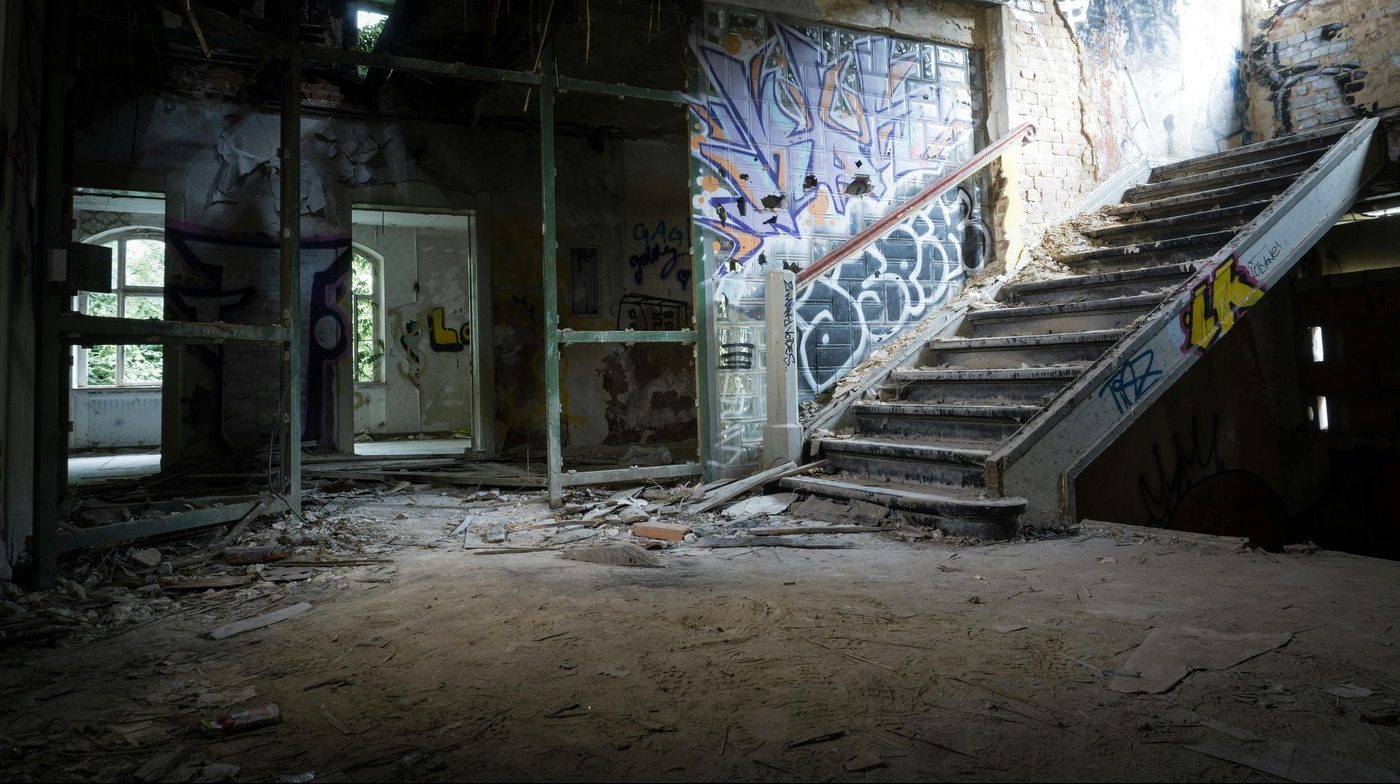The Art of Decay – The Photography of Gina Soden
Art which explores the theme of decay often encourages the viewer to question when life is most valuable. Some may argue that life is most celebrated and worthy at its physical or material peak, i.e. at its most commercially valuable. Others suggest, however, that the experience of life is more evident after time has made its marks of decay, and left behind physical, nostalgic tokens of memories. The latter opinion is adopted by photographer Gina Soden, whose work centres around aged, deteriorating architecture. She captures buildings with facades that overtly display the decomposition of time.
However, despite the sombre connotations of the passage of time, we also find immense beauty in the cyclical nature of life
Furthermore, decay and deterioration, within art, are often utilised to portray the destructive nature of time, and the inevitability of endings. A common focus of macabre artists is upon the loss of structure and value of various muses, including people, buildings, and nature, as they inevitably cease to exist. The ephemeral, fleeting nature of life captures the attention of artists and viewers, as it engages with the universal, existential uncertainty surrounding mortality. However, despite the sombre connotations of the passage of time, we also find immense beauty in the cyclical nature of life. If you look outside, you may see a tree with resplendent orange leaves; a testimony to the majestic cycle of nature, which has inspired countless artists, writers, and poets.
Her emotionally evocative images adopt an intimate perspective, as Soden displays buildings which have accumulated the marks of memory and history
This sense of awe-inspiring natural deterioration is captured in Gina Soden’s photography, in particular her musings of abandoned buildings. Her emotionally evocative images adopt an intimate perspective, as Soden displays buildings which have accumulated the marks of memory and history. Within the decomposed surfaces of aged architecture, the viewer is moved to consider how these structures have faced the test of time, and therefore ponder the stories that their decayed facades tell. Soden achieves this homage to buildings’ histories through the almost tangible texture which she captures. It feels as though the viewer could reach into the photograph and crumble the building’s flaking exterior between their fingers.
Soden’s art has encouraged me to see finding beauty in decay as an essentially human act, demonstrating a desire to find meaning in an aged object through a focus on the blemishes and traced denoting a life well lived. This sentiment is poignantly displayed in Gina Soden’s incredibly intimate portrayals of abandoned structures, evoking an atmosphere of universal nostalgia and a recognition of the inevitable, yet beautiful, passage of time. Alongside the central focus of decay within Soden’s photography, she emphasises the sense of reverence towards individual stories in her mixed media collages. In this ‘Corrodium’ series, Soden prints her photography onto material found on the premises of these abandoned buildings. This neglected material, combined with the visual representation of structural decomposition, culminates in a poignant artifact which celebrates the memory and life of a building. Furthermore, Soden’s mixed media collages allow for a more immersive, sensory experience, as this process introduces a tangible, textured element to her art.
Her sanguine, celebratory depictions of architectural decomposition offer a reassuring reminder that decay can also signify the grandeur of nature and time
In addition, Gina Soden’s artwork speaks to viewers as she provides hope against the dark uncertainty surrounding mortality. She achieves this as she encourages viewers to consider the collision of the past and present, focusing on a subject which has naturally deteriorated. A sense of hope is created as Soden highlights the beauty and splendour of decay caused by the passage of time; her images, which exude life, become a commemoration for the forgotten histories of neglected buildings.
Overall, in Soden’s pursuit to uncover the forgotten histories of the buildings which she photographs, she challenges the argument that decay is merely a cause for pessimism. Her sanguine, celebratory depictions of architectural decomposition offer a reassuring reminder that decay can also signify the grandeur of nature and time, and that within bleak, morbid deterioration, decay can indeed serve as a physical representation of otherwise forgotten memories.

Comments